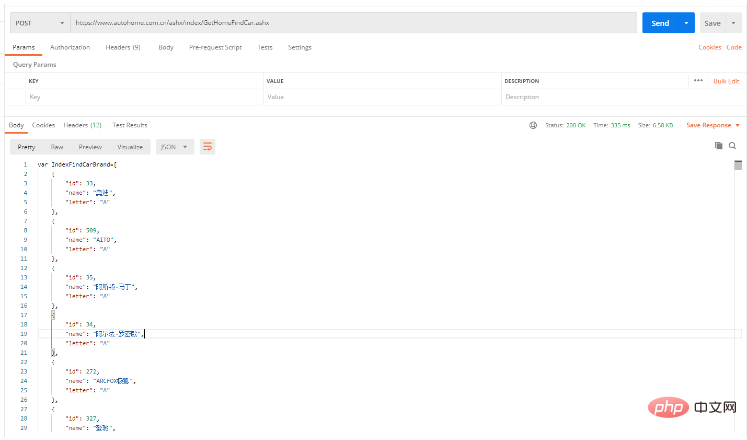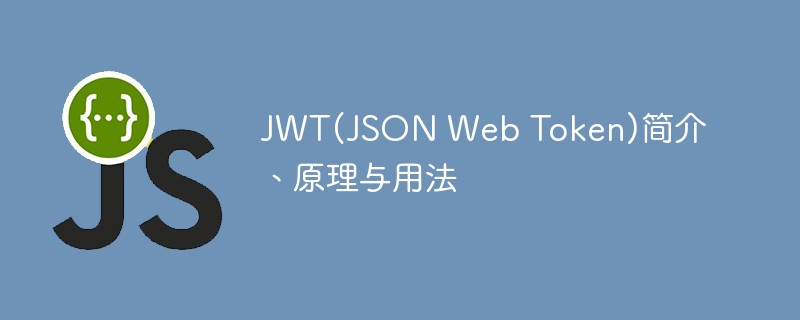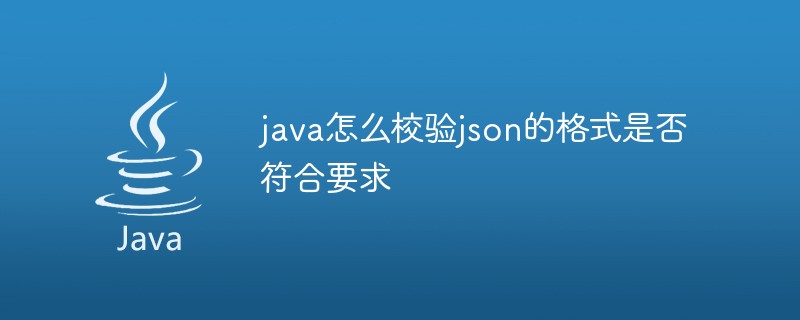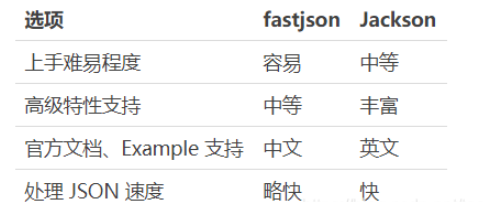 Java
Java javaTutorial
javaTutorial How do annotations in the Jackson library control JSON serialization and deserialization?
How do annotations in the Jackson library control JSON serialization and deserialization?Annotations in the Jackson library control JSON serialization and deserialization: Serialization: @JsonIgnore: Ignore the property @JsonProperty: Specify the name @JsonGetter: Use the get method @JsonSetter: Use the set method Deserialization: @JsonIgnoreProperties: Ignore the property @JsonProperty: Specify the name @JsonCreator: Use the constructor @JsonDeserialize: Custom logic

Annotations are used in the Jackson library to control JSON serialization and deserialization
Introduction
The Jackson library is a popular Java library for binding JSON data. Annotations play a vital role in the Jackson library, allowing us to control the JSON serialization and deserialization process.
Serialization annotations
- @JsonIgnore: Ignore a property or method so that it is not included in the JSON output.
- @JsonProperty: Specifies the name of the property in the JSON output.
- @JsonGetter: Get the value returned when the method is called instead of accessing the property directly.
- @JsonSetter: Set the value of the property when the setter method is called, rather than assigning the value directly.
Deserialization annotations
- @JsonIgnoreProperties: Ignore the properties specified in the JSON input.
- @JsonProperty: Specify the name of the property in the JSON input and map it to a property or method.
- @JsonCreator: Create objects using non-default constructors instead of using setter methods.
- @JsonDeserialize: Specify custom deserialization logic, you can use a custom type converter or handler.
Practical case
The following is an example class showing how to use Jackson annotations:
@JsonIgnoreProperties(ignoreUnknown = true)
public class Person {
private String name;
@JsonProperty("age")
private int yearsOld;
@JsonGetter("education")
public String getEducation() {
return "College";
}
@JsonSetter("years_old")
public void setAge(int yearsOld) {
this.yearsOld = yearsOld;
}
}In this example:
-
@JsonIgnoreProperties(ignoreUnknown = true)Ignore properties that do not exist in the class in the JSON input. -
@JsonProperty("age")Specifies that the name of theyearsOldproperty in the JSON output is "age". -
@JsonGetter("education")Returns the value of the "education" attribute through the get method "getEducation". -
@JsonSetter("years_old")Set the value of the "yearsOld" attribute through the setting method "setAge".
You can use the Jackson library for serialization and deserialization in the following ways:
// 序列化 ObjectMapper mapper = new ObjectMapper(); String json = mapper.writeValueAsString(person); // 反序列化 Person person = mapper.readValue(json, Person.class);
The above is the detailed content of How do annotations in the Jackson library control JSON serialization and deserialization?. For more information, please follow other related articles on the PHP Chinese website!
 VUE3怎么使用JSON编辑器May 12, 2023 pm 05:34 PM
VUE3怎么使用JSON编辑器May 12, 2023 pm 05:34 PM1、先看看效果图,可以自行选择展示效果2、这是我在vue3项目中使用的JSON编辑器,首先引入第三方插件npminstalljson-editor-vue3yarnaddjson-editor-vue33、引入到项目中//导入模块importJsonEditorVuefrom'json-editor-vue3'//注册组件components:{JsonEditorVue},4、一般后端返回的是会将JSON转为String形式我们传给后端也是通过这种形式,就可以通
 SpringBoot之Json的序列化和反序列化问题怎么解决May 12, 2023 pm 04:07 PM
SpringBoot之Json的序列化和反序列化问题怎么解决May 12, 2023 pm 04:07 PM控制json序列化/反序列化1.@JsonIgnoreProperties的用法@JsonIgnoreProperties(value={"prop1","prop2"})用来修饰Pojo类,在序列化和反序列化的时候忽略指定的属性,可以忽略一个或多个属性.@JsonIgnoreProperties(ignoreUnknown=true)用来修饰Pojo类,在反序列化的时候忽略那些无法被设置的属性,包括无法在构造子设置和没有对应的setter方法.2.@Js
 Java怎么调用接口获取json数据解析后保存到数据库May 14, 2023 am 10:58 AM
Java怎么调用接口获取json数据解析后保存到数据库May 14, 2023 am 10:58 AMJava调用接口获取json数据保存到数据库1.在yml文件中配置自己定义的接口URL//自己定义的JSON接口URLblacklist_data_url:接口URL2.在Controller中添加请求方法和路径/***@Title:查询*@Description:查询车辆的记录*@Author:半度纳*@Date:2022/9/2717:33*/@GetMapping("/Blacklist")publicvoidselectBlacklist(){booleana=imB
 深入解析JWT(JSON Web Token)的原理及用法Jan 10, 2023 am 10:55 AM
深入解析JWT(JSON Web Token)的原理及用法Jan 10, 2023 am 10:55 AM本篇文章给大家带来了关于JWT的相关知识,其中主要介绍了什么是JWT?JWT的原理以及用法是什么?感兴趣的朋友,下面一起来看一下吧,希望对大家有帮助。
 php输出json无法解析的原因和解决方法【总结】Mar 23, 2023 pm 04:35 PM
php输出json无法解析的原因和解决方法【总结】Mar 23, 2023 pm 04:35 PMPHP作为一种常见的编程语言,在web开发中使用广泛,其与前端交互的方式也多种多样。其中,输出Json数据是一种常见的交互方式,但有时候会碰到Json无法解析的问题。为什么会出现无法解析的情况呢?下面列举了几个可能的原因。
 java怎么校验json的格式是否符合要求May 15, 2023 pm 04:01 PM
java怎么校验json的格式是否符合要求May 15, 2023 pm 04:01 PMJSONSchemaJSONSchema是用于验证JSON数据结构的强大工具,Schema可以理解为模式或者规则。JsonSchema定义了一套词汇和规则,这套词汇和规则用来定义Json元数据,且元数据也是通过Json数据形式表达的。Json元数据定义了Json数据需要满足的规范,规范包括成员、结构、类型、约束等。JSONSchema就是json的格式描述、定义、模板,有了他就可以生成任何符合要求的json数据json-schema-validator在java中,对json数据格式的校验,使用
 php如何将xml转为json格式?3种方法分享Mar 22, 2023 am 10:38 AM
php如何将xml转为json格式?3种方法分享Mar 22, 2023 am 10:38 AM当我们处理数据时经常会遇到将XML格式转换为JSON格式的需求。PHP有许多内置函数可以帮助我们执行这个操作。在本文中,我们将讨论将XML格式转换为JSON格式的不同方法。
 SpringBoot怎么返回Json数据格式May 19, 2023 pm 11:49 PM
SpringBoot怎么返回Json数据格式May 19, 2023 pm 11:49 PM一、@RestController注解在SpringBoot中的Controller中使用@RestController注解即可返回JSON格式的数据。@RestController注解包含了@Controller和@ResponseBody注解。@ResponseBody注解是将返回的数据结构转换为JSON格式。@Target({ElementType.TYPE})@Retention(RetentionPolicy.RUNTIME)@Documented@Controller@Respons


Hot AI Tools

Undresser.AI Undress
AI-powered app for creating realistic nude photos

AI Clothes Remover
Online AI tool for removing clothes from photos.

Undress AI Tool
Undress images for free

Clothoff.io
AI clothes remover

AI Hentai Generator
Generate AI Hentai for free.

Hot Article

Hot Tools

SAP NetWeaver Server Adapter for Eclipse
Integrate Eclipse with SAP NetWeaver application server.

MinGW - Minimalist GNU for Windows
This project is in the process of being migrated to osdn.net/projects/mingw, you can continue to follow us there. MinGW: A native Windows port of the GNU Compiler Collection (GCC), freely distributable import libraries and header files for building native Windows applications; includes extensions to the MSVC runtime to support C99 functionality. All MinGW software can run on 64-bit Windows platforms.

VSCode Windows 64-bit Download
A free and powerful IDE editor launched by Microsoft

MantisBT
Mantis is an easy-to-deploy web-based defect tracking tool designed to aid in product defect tracking. It requires PHP, MySQL and a web server. Check out our demo and hosting services.

mPDF
mPDF is a PHP library that can generate PDF files from UTF-8 encoded HTML. The original author, Ian Back, wrote mPDF to output PDF files "on the fly" from his website and handle different languages. It is slower than original scripts like HTML2FPDF and produces larger files when using Unicode fonts, but supports CSS styles etc. and has a lot of enhancements. Supports almost all languages, including RTL (Arabic and Hebrew) and CJK (Chinese, Japanese and Korean). Supports nested block-level elements (such as P, DIV),





